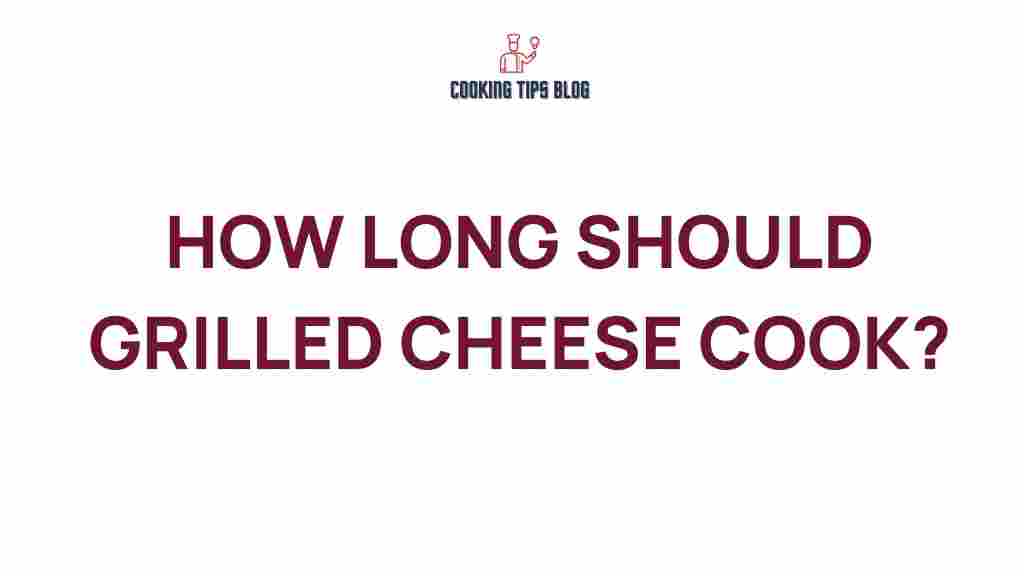The Perfect Grilled Cheese: How Long Should It Really Cook?
Grilled cheese sandwiches are a beloved comfort food for many, evoking memories of childhood and cozy kitchens. The crispy, golden exterior paired with the gooey, melted cheese inside is a combination that’s hard to resist. But have you ever wondered, “How long should I really cook my grilled cheese?” This article will delve into the perfect cooking time for a grilled cheese sandwich, ensuring you achieve that ideal balance of texture and flavor. Whether you’re a novice in the kitchen or a seasoned chef, this guide will help you master the art of the perfect grilled cheese.
Understanding Grilled Cheese Cooking Time
The cooking time for a grilled cheese sandwich can vary based on several factors, including:
- Type of Bread: Different breads have varying densities and moisture levels.
- Type of Cheese: The melting point of the cheese can affect how quickly it becomes gooey.
- Heat Level: The temperature of your cooking surface significantly impacts cooking time.
- Thickness of Ingredients: Thicker slices of bread or cheese will require more time to cook through.
Generally, a grilled cheese sandwich cooks between 4 to 10 minutes, depending on the factors mentioned above. Let’s break it down further.
Step-by-Step Guide to Cooking the Perfect Grilled Cheese
To achieve the ultimate grilled cheese, follow these steps:
1. Gather Your Ingredients
Start with the basics:
- Bread: Choose your favorite bread, such as white, whole wheat, or sourdough.
- Cheese: Opt for cheeses that melt well, like cheddar, mozzarella, or American cheese.
- Butter or Oil: Use butter for a richer flavor, or opt for oil for a healthier alternative.
2. Preheat Your Pan
Heat a skillet over medium-low heat. This is crucial; cooking too fast can lead to burnt bread and unmelted cheese. A lower heat allows the bread to toast evenly while giving the cheese time to melt.
3. Assemble Your Sandwich
Spread butter or oil on one side of each slice of bread. Place one slice, butter-side down, in the skillet. Layer your cheese on top, then place the second slice of bread on top, butter-side up.
4. Cooking Time
Cook the sandwich for about 3 to 4 minutes on one side. Keep a close eye on the color; you’re aiming for a golden brown. After 3 to 4 minutes, carefully flip the sandwich using a spatula. Cook the other side for another 3 to 4 minutes.
5. Check for Doneness
After flipping, check the cheese’s melting progress. If it’s still too firm after the total cooking time of about 6 to 8 minutes, you can lower the heat slightly and cover the pan for an additional minute. This can help trap heat and melt the cheese.
6. Serve and Enjoy
Once both sides are golden and the cheese is melted, remove the sandwich from the skillet. Let it sit for a minute before slicing to avoid burns from hot cheese. Serve with your favorite sides, like tomato soup or pickles.
Troubleshooting Your Grilled Cheese
Sometimes, even the most seasoned cooks can face challenges when preparing grilled cheese. Here are some common issues and solutions:
1. Burnt Bread, Cold Cheese
If you find that the bread is burning while the cheese remains unmelted, reduce the heat. Cooking on low allows the bread to toast without scorching while giving the cheese ample time to melt.
2. Soggy Bread
If your bread is soggy, this could be due to too much butter or oil. Use a lighter hand when applying fat to the bread. Alternatively, consider using a firmer bread that can withstand moisture better.
3. Uneven Toasting
If one side of your sandwich is browning more than the other, check the heat distribution of your pan. You may need to rotate the sandwich during cooking or use a different pan.
4. Sticking to the Pan
If your bread is sticking to the skillet, ensure you use enough butter or oil. Non-stick pans can also be a great alternative to prevent sticking.
5. Overcooked Cheese
If your cheese is oozing out and burning, it might be a sign of cooking at too high a temperature. Keep the heat manageable to allow for a gradual melt.
Variations on the Classic Grilled Cheese
While the classic grilled cheese is a timeless favorite, you can experiment with variations to suit your taste:
- Gourmet Grilled Cheese: Use a mix of cheeses like brie, gouda, and blue cheese for a decadent twist.
- Added Ingredients: Consider adding sliced tomatoes, avocado, or crispy bacon for extra flavor.
- Herbs and Spices: Incorporate fresh herbs like basil or sprinkle some garlic powder for added depth.
- Different Spreads: Try using pesto or hummus instead of butter for a unique flavor profile.
These variations can elevate your grilled cheese experience and cater to different dietary preferences.
Conclusion
Cooking the perfect grilled cheese sandwich involves understanding the right cooking time along with the factors that influence it. Remember to keep the heat low, choose quality ingredients, and don’t rush the process. With practice, you can achieve that golden exterior and perfectly melted cheese that makes every bite worth savoring.
For more delicious recipes and kitchen tips, check out our cooking blog. And if you’re looking for more information on the science of cooking, visit this resource to expand your culinary knowledge.
Now, it’s time to heat up that skillet and enjoy your homemade grilled cheese!
This article is in the category Tools and created by Cookingtipsblog Team

1 thought on “The Perfect Grilled Cheese: How Long Should It Really Cook?”